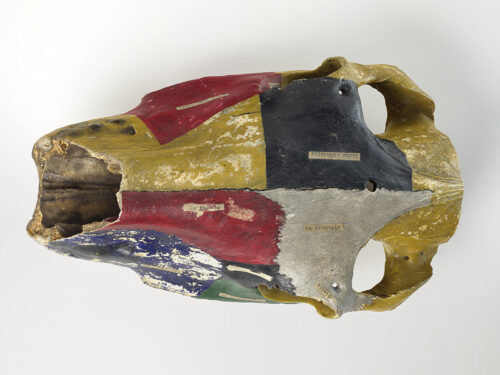I am a recent addition to the Cultural Heritage Digitisation Service team. I was previously a studio photographer, with an additional specialism in biological and microscopic photography. My scientific artwork has been exhibited in Edinburgh and was recently shortlisted for the Royal Photographic Society’s International Open Call. My previous digitisation and archival experience stems from my master’s degree in biological photography, where we had an extensive selection of taxidermy animals, skeletons and pinned insects. Some moths were over 200 years old!
Over the past month, I have been onboarded and trained with the varied digitisation equipment, joined a warm and welcoming team, and began my project photography. I am working on a fascinating interinstitutional project featuring objects from the collections of The Royal Dick Veterinary School, Edinburgh Zoo, and OneKind (an animal welfare charity originally formed in 1911 under the name Scottish Society for the Prevention of Vivisection). The overarching theme of the project is to document the history of animal rights, especially within the field of veterinary medicine, and the interplay that it had with first-wave feminism, the early suffrage movement and Scottish culture.
The items included in this project are as diverse and vast as the organisations they originated from. So far, I have seen lecture notes from Edinburgh students in 1870, gruesome collections of bone aching veterinary instruments and century old dried botanical samples. However, one of the most visually striking objects I have seen so far is also one of the oldest in the project: a painted cow skull from 1840.
Given the skull’s striking appearance, it could almost be believed to be of some great ceremonial purpose. However, the vividly painted skull would actually have previously been used as a teaching tool at the Royal (Dick) School of Veterinary Studies. The skull is painted in large sections, with each swathe of colour being defined by the skulls sutured joints. These lines are a type of Synarthrosis, and display the points were the free-floating sections of the skull found in infancy have fused. This leaves a single, rigid, contiguous skull.
You can see all the images of the skull in full resolution here
And the Lecture Notes on Botany are here
With the variety of objects, I have seen so far, I am excited to see what else is to follow. The collections that these items are taken from are so vast and extensive, and the topic so broad, that I am blissfully clueless as to what items I can expect to see next. All I can say is I am excited to see what arrives, and to update the blog in the future with further images and discoveries!
George Hodgson, Photographer


Be First to Comment